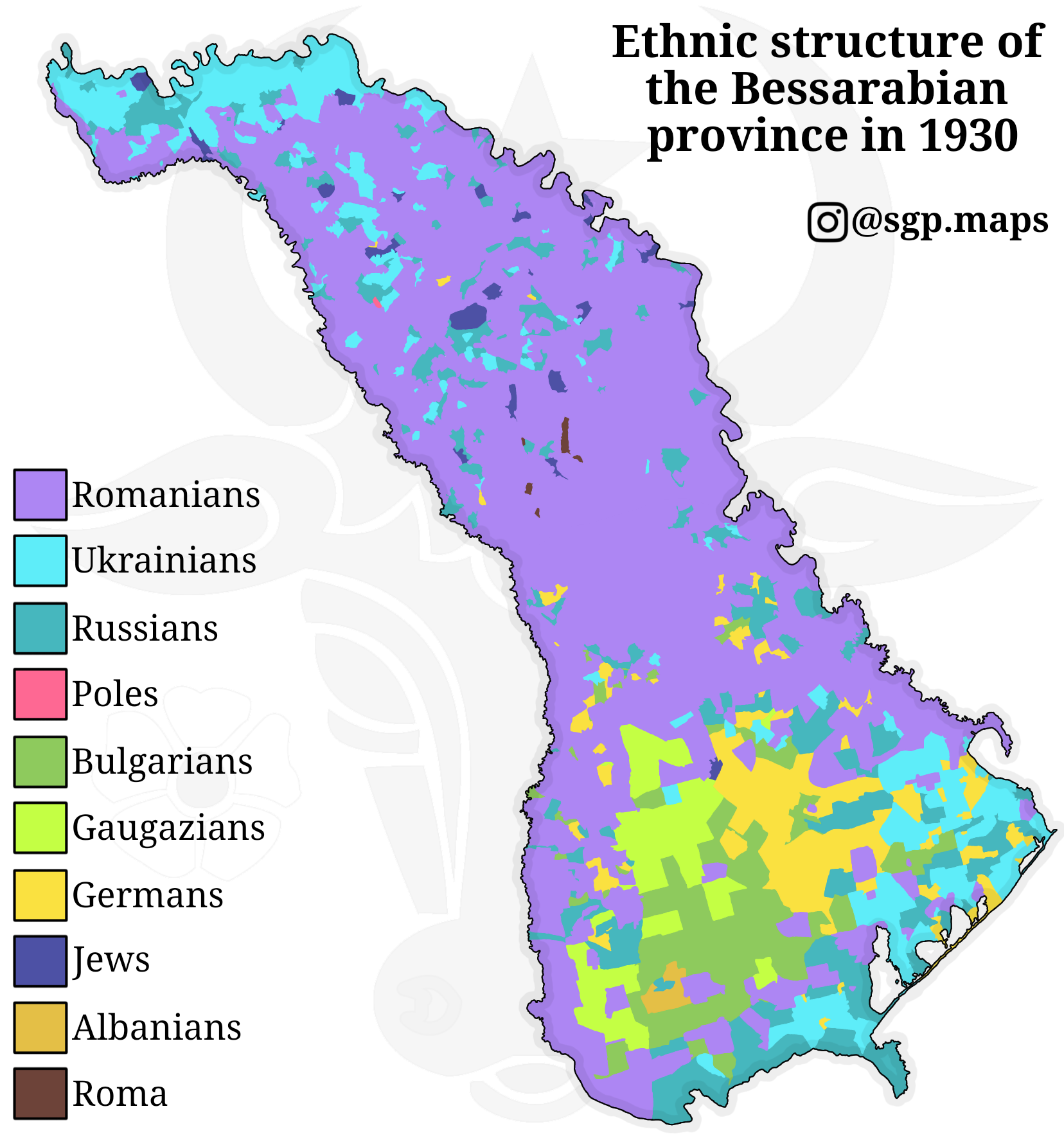Ethnic Map of Bessarabia 1930


David Chen
Data Visualization Specialist
David Chen is an expert in transforming complex geographic datasets into compelling visual narratives. He combines his background in computer science ...
Geographic Analysis
What This Map Shows
The 'Ethnic Map of Bessarabia 1930' provides a detailed visualization of the ethnic composition of the Bessarabian province during a pivotal time in its history. This map outlines the distribution and concentration of various ethnic groups, including Romanians, Ukrainians, Russians, Jews, and others, reflecting the diverse cultural tapestry of the region. Bessarabia, located between the Prut and Dniester rivers, has historically been a crossroads of various civilizations, and this map captures a snapshot of its demographic landscape just before significant political changes would alter its trajectory.
Deep Dive into Ethnic Composition
The ethnic structure of Bessarabia in 1930 is particularly significant when we examine the historical context of the region. At this time, Bessarabia was part of Romania, having been united with it in 1918 after a tumultuous period that included Russian and Austro-Hungarian control. Interestingly, the ethnic map illustrates how the area was not homogeneously Romanian; rather, it was characterized by a multifaceted ethnic landscape that contributed to both its cultural richness and its political complexities.
Romanians formed the largest ethnic group, making up approximately 60% of the population. However, they shared the territory with sizable minorities, including Ukrainians (around 16%), Russians (about 10%), and Jews (roughly 6%). This blend of cultures led to a vibrant social fabric but also to tensions, especially as nationalistic sentiments grew in the interwar period. The presence of these diverse groups played a crucial role in shaping local customs, languages, and even economic activities.
What's fascinating is the impact of these demographics on urban and rural life. Major cities like Chișinău and Bălți were melting pots where different ethnicities interacted, leading to a unique urban culture that was distinctly Bessarabian. Conversely, rural areas often maintained more homogeneous populations, reflecting the traditional lifestyles and customs of their predominant ethnic groups.
The Jewish community, despite being a minority, was particularly influential, especially in commerce and education. They contributed to the economic life of towns and cities, and their presence was significant in the development of a bilingual, multicultural society. However, the rise of nationalism and subsequent events leading up to World War II would have dire consequences for this community.
Regional Analysis
Breaking down the ethnic composition by regions shown in the map reveals interesting variations. The northern part of Bessarabia had a higher concentration of Ukrainians, particularly in districts like Hotin and Soroca, where Ukrainian cultural influences were strong. In contrast, the central and southern regions were predominantly Romanian, especially in areas like Chișinău, where Romanian identity was deeply embedded. This regional disparity is crucial to understanding the local dynamics and tensions that arose during this period.
For instance, the district of Bălți, with its significant Jewish population, contrasted sharply with more rural areas that remained predominantly Romanian or Ukrainian. This urban-rural divide not only influenced political alignment but also shaped the educational and cultural institutions that emerged in the region. The map, therefore, serves as a tool to analyze these regional differences and their implications for social cohesion and conflict.
Significance and Impact
Understanding the ethnic composition of Bessarabia in 1930 is vital for several reasons. First, it provides insights into the historical context of ethnic relations in Eastern Europe, which can help explain current geopolitical tensions. The legacy of these diverse communities is still felt today, as issues of nationalism and identity continue to shape political discourse in the region.
Moreover, the demographic shifts that occurred after 1930, especially during and after World War II, led to significant changes in the ethnic landscape of Bessarabia. Many Jews and other minorities faced persecution, leading to a demographic void that has implications for cultural heritage and social dynamics in modern Moldova.
As we reflect on this map, we can appreciate the complexities of Bessarabia's past and how it continues to influence the present. Ever wondered why certain areas in Eastern Europe are so ethnically diverse? The answer often lies in their historical narratives, much like Bessarabia's rich and tumultuous story.
In conclusion, the 'Ethnic Map of Bessarabia 1930' is not just a visualization of demographics; it tells a story of cultural intersection, conflict, and the enduring impact of history on contemporary identities. Understanding this context is essential for anyone interested in the intricate tapestry of Eastern European history and its ongoing implications today.
Visualization Details
- Published
- October 3, 2025
- Views
- 54
Comments
Loading comments...